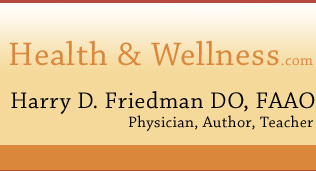Are your patients toxic? The answer increasingly appears to be yes—and your job, in order to maintain optimal health and reduce the incidence of the diseases of aging, is to detoxify them. That conclusion is one being reached by more and more anti-aging practitioners, and achieves particular resonance with Rashid O. Buttar, D.O. of Cornelius, NC, and Robert A. Nash, M.D. of Virginia Beach, VA.
"I can now very comfortably and definitively state to you," says Dr. Buttar, "that, in my opinion, based on the evidence, every single chronic insidious disease process i/related to one word: toxicity. You cannot address the issues of aging unless you address detoxification." Dr. Buttar, board certified and a diplomat in preventive medicine and clinical metal toxicology, and Vice-Chairman of the American Board of Clinical Metal Toxicology, contends that he only recently arrived at this conclusion. "Five years ago I wouldn’t have said this, even a year ago I wouldn’t have said it. But the more success we’ve had, the clearer it has become: All chronic disease is toxicity. You get rid of the toxicity and you put out the fire. You may need to rebuild afterward, but you must put the fire out. Conventional medicine is just covering your eyes so you don’t see the fire."
Dr. Nash, who is board certified in neurology, pain medicine, and chelation therapy and is Chairman of the American Board of Clinical Metal Toxicology, concurs, though perhaps not 100 percent. “Most of the diseases of aging—vascular, most cancers, arthritis and others—have been shown to be associated with toxic metals and persistent organic pollutants. Vascular diseases, stroke, heart attack, plus most of the cancers and macular degeneration, have been directly linked to lead. That’s just lead," notes Dr. Nash.
And "just lead" is but a minor fraction of the toxic soup in which we have all come to stew. As Walter J. Crinnion, N.D., chairman of the department of environmental medicine at Southwest College of Naturopathic Medicine, Phoenix, wrote six years ago, "Chemical compounds ubiquitous in our food, air, and water are now found in every person. The bioaccumulation of these compounds in some individuals can lead to a variety of metabolic and systemic dysfunctions, and in some cases outright disease states." (Altern Med Rev 2000;5(1):52-63) Dr. Crinnion wrote that some individuals appear to be less able to clear the daily chemical exposure from the body than others, leading to a total load of toxins that exceeds the ability of the body to adapt; at that point, damage to certain organ systems can occur. “The systems most affected by these xenobiotic compounds include the immune, neurological, and endocrine systems.” Immunotoxicity, according to Dr. Crinnion, may be the major factor in the increasing rates of asthma, allergies, cancers, and chronic viral infections. But the effects are widespread: “Neurological toxicity can affect cognition, mood, and cause chronic neurological illnesses. Endocrine toxicity can affect reproduction, menses, libido, metabolism, stress-handling ability, glucose regulation, and other important functions."
A 2003 U.S. study by the Centers for Disease Control revealed the presence of 116 chemicals—some of them banned for more than two decades because of toxicity—in people of all ages. In July 2005, the CDC released the third National Report on Human Exposure to Environmental Chemicals, which the organization stated was “the most extensive assessment ever made of the exposure of the U.S. population to chemicals in our environment.” CDC claims that its Environmental Health Laboratory at the National Center for Environmental Health (NCEH), using “advanced laboratory science and innovative techniques,” has been in the forefront of efforts to assess people's exposure to environmental chemicals. “CDC's highly trained laboratory scientists have built on more than three decades of experience in measuring chemicals directly in people's blood or urine, a process known as biomonitoring.” While presenting first-time exposure information for 38 of the 148 chemicals included, the CDC makes clear that “the measurement of an environmental chemical in a person’s blood or urine does not by itself mean that the chemical causes disease … separate studies of varying exposure levels and health effects are needed to determine which blood or urine levels result in disease.” However, according to Dr. Buttar, “the number one concern among scientists at CDC, which they cannot say publicly, is mercury; number two is arsenic."



